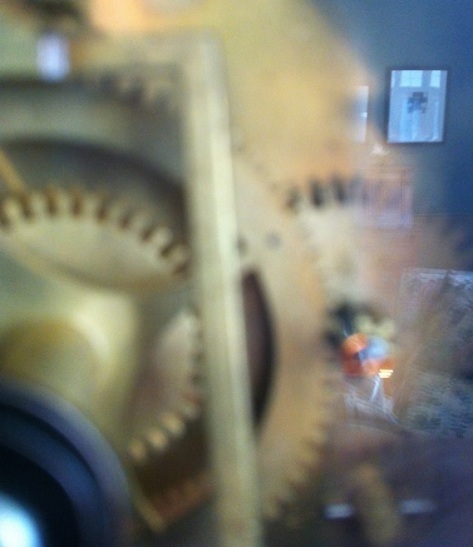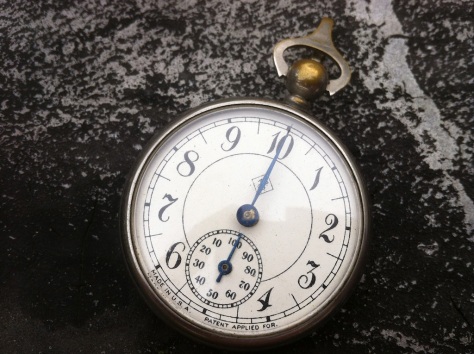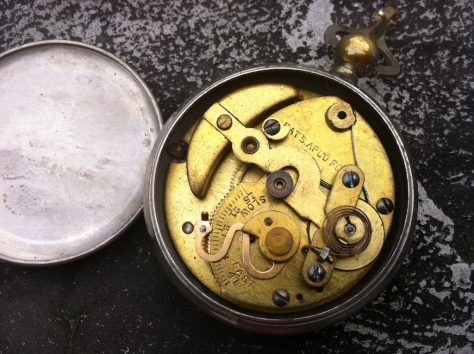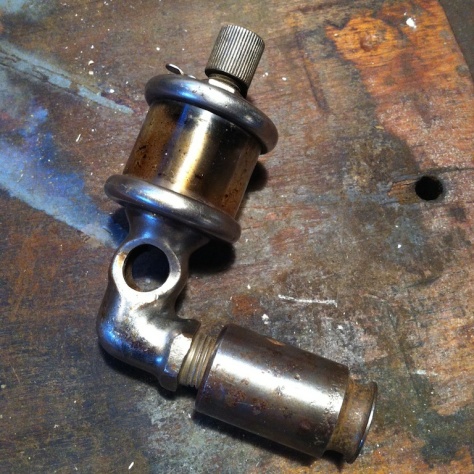
A beautiful example of a nickel-plated drip-feed machine oiler, manufactured by the Vermont Farm Machinery Company of Bellows Falls, VT. Oil reservoir, angled feed arm with vacuum breaker port, and machine attachment fitting. Brass, glass, and class…
Fuller Steam Division brings you the second in a series of vintage objects that evoke the spirit of the Steampunk movement: mechanical technology, explicit functionality, a legacy of inventiveness. At the turn of the nineteenth century, Vermont was a center of industrious pursuit, harnessing the water power of its rivers and brooks, connecting small towns with larger cities by railroad, and creating the tools and products needed for the Industrial Age with steam-powered shops, mills, and factories. The gritty town of Bellows Falls on the Connecticut River epitomized this busy period of New England history: one of its most successful manufacturing concerns was the Vermont Farm Machinery Company.
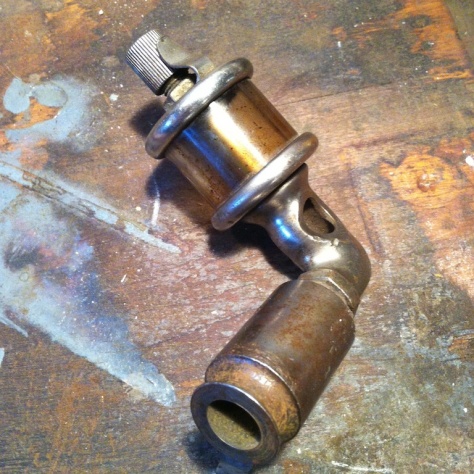
End view of the VFM Co. drip-feed machine oiler, showing the point-of-attachment fitting.
Established in the booming river town in 1868, the company was originally called the Hartford Sorghum Machine Company and made sap evaporators. This equipment was used to boil maple sap in the production of maple syrup, an agricultural endeavor in which Vermont still leads the nation, nearly 150 years later. The firm’s name was changed to the Vermont Farm Machinery Company in 1873 and the product line diversified rapidly, evolving toward the dairy industry, which had begun to surpass sheep farming in the 1850’s. For decades after, farming in the state was dominated by the production of milk for New England’s metropolitan markets – Boston was a short refrigerated train trip away – and the company grew rapidly. They produced the Cooley Creamer, invented by William Cooley of Waterbury in 1877, and it became their flagship device, used on the majority of New England Farms by the late 1880’s. In addition, they developed and manufactured a myriad of other lines, including machine butter churns, separators, presses, bottle washers, coolers, and steam engines and boilers. At one time the largest manufacturer of farm machinery in the world, and one of Bellows Falls most significant employers with hundreds of workers, the company fell on hard times and shuttered the doors of its great three-story brick plant in 1925.
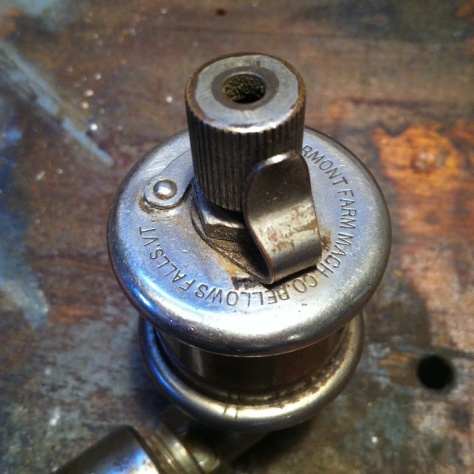
Top view, showing the maker’s stamp, the knurled drip valve nut with spring clip keeper in the foreground, and the pivoting cover for the fill port behind the nut.
Machines need lubrication for their constantly moving parts such as bearings, bushings, gearboxes, and pump housings, and manufacturers invented a number of devices for this never-ending maintenance task. An attachment known as a drip machine oiler was a common solution: a sealed vessel on an arm attached to the part in need of lubrication held an amount of oil (replenished periodically by hand) and this was fed steadily, drop by drop, into the area of friction, by gravity. Typically the vessel is a glass cylinder (for visual inspection), a bottom feed outlet leading to the mounting arm, and a cap with provision for replenishment (a fill port) and control of the dispensing rate of the lubricating oil. Constructed of brass, plated steel, glass, and other durable materials, these simple yet effective parts can last for many years of service; they are still used today, albeit with more modern material components. They might not last as long as their vintage counterparts, but the operating principal still works just fine. Part of the allure of steampunk, however, is all about technology which has withstood the test of time, and sparks the imagination of a world where things that whir, click, and hiss can be understood and depended upon, whatever may come along.
I came upon this beautiful little find in a local antique shop and was delighted to learn that it originated from nearby, just 20 miles up the Connecticut River. Bellows Falls, like Brattleboro, was a beehive of activity in the days of steam, and its past lives on in many forms, from small machined parts to hulking historic structures. Well-made objects, and the stories they can tell, or fuel, in the case of Fuller Steam Division, create a perfect imagination engine, generating a fascinating take on history, whether real, speculative, or alternate. Holding something solid in one’s hand, the past becomes palpable and the fictional is substantiated. How much fun is that?
 Today’s subject is a simple hand-held houseplant humidifying device (not a brass “plant”, mister…): refillable, thumb-pumped, all-brass construction, task-oriented and obviously with a few years under its screw cap. The metal patinas over the years; the piston cylinder tips a bit from the pressure of many a thrust; the sides gain a dent or two – but it keeps going. If it leaks or stops spraying, it can be repaired. If it’s not needed for the moment, it sits in repose, gleaming in the sunlight with its handle and nozzle arcing gracefully as the houseplants it dutifully services. A paen, no doubt, to utilitarianism but a pleasingly simple and effective example. It’s not that hard to do things well. What are your preferences?
Today’s subject is a simple hand-held houseplant humidifying device (not a brass “plant”, mister…): refillable, thumb-pumped, all-brass construction, task-oriented and obviously with a few years under its screw cap. The metal patinas over the years; the piston cylinder tips a bit from the pressure of many a thrust; the sides gain a dent or two – but it keeps going. If it leaks or stops spraying, it can be repaired. If it’s not needed for the moment, it sits in repose, gleaming in the sunlight with its handle and nozzle arcing gracefully as the houseplants it dutifully services. A paen, no doubt, to utilitarianism but a pleasingly simple and effective example. It’s not that hard to do things well. What are your preferences?



